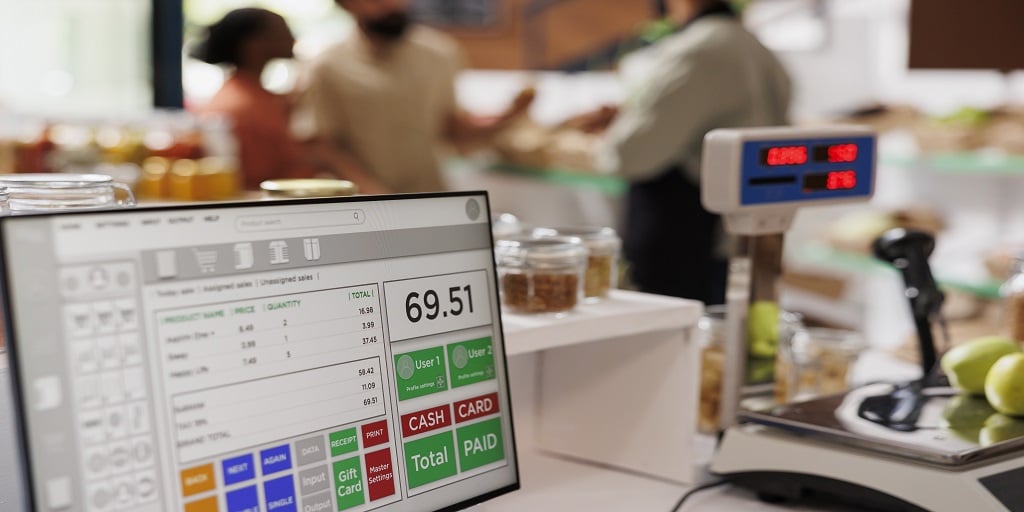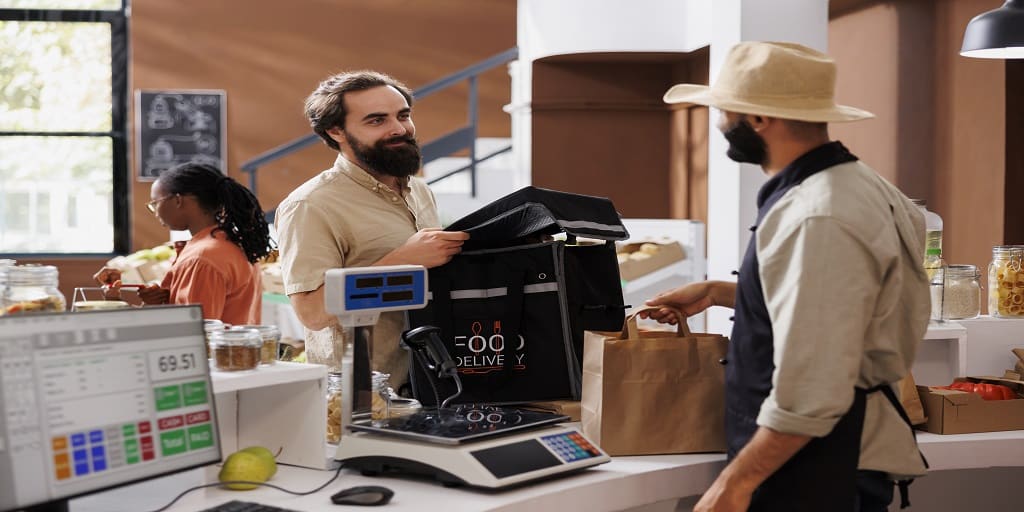Oman’s food and beverage industry has witnessed incredible growth over the past few years. With new cafés, fine-dining restaurants, and franchise outlets emerging across cities like Muscat, Sohar, and Salalah, competition in the culinary market is fiercer than ever. While creativity, taste, and ambiance define customer experience, operational efficiency is what determines profitability.
Behind every successful restaurant lies a well-managed kitchen and a strong inventory control system. Unfortunately, many Omani restaurants still rely on manual spreadsheets or basic tracking methods that often lead to costly mistakes. From food wastage to inaccurate stock counts, these inefficiencies can silently drain profits.
That’s where restaurant management software in Oman comes in. By digitizing how ingredients, supplies, and stock levels are tracked, restaurant owners can cut wastage, control costs, and boost overall profitability. Inventory management systems provide real-time data, accurate forecasting, and automation that transforms chaos into order—giving restaurateurs more control over their business performance.
As the restaurant market in Oman continues to evolve, the need for technology-driven solutions has become essential to staying competitive.
Understanding Restaurant Inventory Management
Inventory management in restaurants refers to the process of tracking every ingredient and item that comes in and goes out of the kitchen. From vegetables, meat, and dairy products to napkins and packaging materials, everything counts as inventory.
A proper system ensures that you know:
- What’s currently in stock
- How much is being used daily
- When to reorder supplies
- Which ingredients are nearing expiry
Traditional methods like manual logs or verbal updates often result in inaccuracies. A small counting mistake can cause food shortages during busy hours or excess stock that ends up wasted.
Modern inventory management software replaces guesswork with precision. It automatically updates stock levels after every sale, keeps tabs on ingredient usage, and even alerts managers when supplies run low. By integrating with the POS system for restaurants in Oman, it connects sales data directly to inventory consumption, ensuring everything is perfectly aligned.
In today’s competitive restaurant landscape, understanding and controlling your inventory isn’t just good management; it’s a survival strategy.
Challenges Omani Restaurants Face Without Smart Inventory Systems
While the restaurant scene in Oman is thriving, many establishments still struggle to maintain control over stock and costs. Here are some of the most common challenges:
a. Overstocking and Food Spoilage
Without real-time visibility, restaurants often order more than what’s needed. Perishable items like vegetables, meat, and seafood spoil quickly, leading to unnecessary losses.
b. Understocking During Peak Hours
On the flip side, poor tracking can cause understocking, resulting in unavailable dishes during rush hours. This not only hurts sales but also affects customer satisfaction.
c. Manual Tracking Errors
Handwritten logs or outdated spreadsheets can’t provide accuracy. Small errors accumulate over time, leading to big financial discrepancies.
d. Lack of Supplier Control
Without a proper system, it’s difficult to monitor supplier delivery times, product quality, and pricing consistency, all of which impact operations.
e. No Insight Into Actual Food Costs
Many restaurant owners fail to realize that profit leaks often start in the kitchen. Without clear data on ingredient costs and usage, it’s impossible to price menus strategically or track profitability per dish.
These problems don’t just waste money; they also waste opportunity. Fortunately, automation and digitalization can turn this around completely.
How Smart Inventory Management Helps Reduce Wastage and Boost Profits
Smart restaurant inventory management software in Oman brings structure, accuracy, and transparency to restaurant operations. Here’s how they create a real impact:
a. Real-Time Stock Tracking
Smart systems update stock levels automatically after each sale or kitchen transaction. Managers can see what’s available, what’s running low, and what’s overstocked, all in real time. This ensures ingredients are always used efficiently.
b. Automated Reordering and Supplier Management
Instead of manually checking shelves, the system alerts you when stock hits a predefined threshold. Automatic purchase orders can be sent directly to suppliers, minimizing delays and ensuring you never run out of essential ingredients.
c. Ingredient-Level Cost Control
Smart systems track ingredient consumption per recipe. This helps identify wasteful practices, over-portioning, or unprofitable dishes. Once data is analyzed, menu items can be optimized for better margins.
d. Data Analytics and Forecasting
With historical sales data and consumption trends, the software predicts future demand. This prevents over-purchasing during low-demand periods and ensures readiness for busy weekends or festive seasons.
e. Multi-Outlet Management
For restaurant groups or franchises operating in different cities, a centralized dashboard provides total visibility. Managers can compare performance, track stock transfers, and maintain consistency across all branches.
By combining automation with analytics, restaurants can minimize waste, improve kitchen efficiency, and make data-backed decisions that directly boost profitability.
Benefits of Smart Inventory Management for Restaurants in Oman
The benefits of implementing digital inventory systems go far beyond saving time. They directly enhance a restaurant’s bottom line and customer experience.
a. Reduced Food Waste
Real-time tracking ensures ingredients are used before expiry. Proper portioning and usage reports help reduce overproduction and spoilage, promoting a more sustainable business model.
b. Increased Profit Margins
By eliminating waste and controlling costs, profit margins rise naturally. When every ingredient is accounted for, financial leaks are plugged, improving overall cash flow.
c. Improved Staff Productivity
Manual tracking consumes valuable hours of your chef’s or manager’s time. Automation allows them to focus on service quality and kitchen performance instead.
d. Better Decision-Making
Data-driven insights empower owners to make smarter choices about purchasing, menu pricing, and supplier contracts. Transparent reporting builds accountability across the entire team.
e. Enhanced Customer Experience
A well-managed inventory ensures all dishes on the menu are always available. Guests experience consistent taste and quality, increasing loyalty and positive reviews.
Features to Look for in a Restaurant Inventory Management System
Choosing the right system can make a big difference in how efficiently your restaurant operates. Here are key features to consider:
- Real-Time Tracking: Instantly updates ingredient usage and availability after every transaction.
- Recipe Management: Tracks consumption per dish to calculate exact food cost.
- Automated Purchase Orders: Generates supplier orders when stock falls below a certain limit.
- Integration with POS: Connects inventory with sales data for complete transparency.
- Cloud Access: Manage inventory anytime, anywhere.
- Multi-Outlet Control: Ideal for restaurant chains across Oman.
- Comprehensive Reports: Helps analyze trends and improve planning.
- Mobile App Support: Allows kitchen staff and managers to update stock status from tablets or phones.
With these features, restaurant owners gain the power to monitor every ingredient from delivery to plate, ensuring efficiency at every step.
Choosing the Right Inventory Management Software in Oman
Selecting the perfect software partner requires evaluating both features and local support. Here’s what restaurant owners should prioritize:
- Scalability: The software should grow with your business — whether you manage one outlet or ten.
- Ease of Use: User-friendly design for both tech-savvy managers and kitchen staff.
- Integration Capabilities: Compatibility with your existing POS and accounting systems.
- Local Vendor Support: On-site training and 24/7 support are essential for smooth adoption.
- Data Security: Protection of business data through encrypted cloud systems.
- Cost Efficiency: Affordable pricing without hidden fees.
In Oman, Kays IT stands out as a reliable technology provider specializing in hospitality and restaurant software. With years of experience serving Omani clients, Kays IT offers customized solutions, local expertise, and robust post-installation support, making digital transformation effortless for restaurant businesses.
Conclusion: Smarter Inventory, Stronger Profits
In the fast-paced world of Oman’s restaurant industry, success depends not only on great food but also on operational precision. Smart inventory management ensures that every ingredient is tracked, every cost is accounted for, and every decision is backed by real-time data.
Restaurants that embrace technology gain a competitive edge, reducing waste, improving margins, and delivering consistent customer experiences. On the other hand, those relying on outdated manual processes risk inefficiency and financial loss.
The path forward is clear: adopt an online order system for restaurants in Oman that integrates automation, analytics, and cloud capabilities. Whether you run a single café or manage a growing chain, digital inventory solutions can unlock higher productivity, stronger profits, and long-term sustainability.
Frequently Asked Questions
1. Why is inventory management important for restaurants in Oman?
Effective inventory management helps Omani restaurants minimize food waste, control ingredient costs, and prevent stock shortages. By tracking ingredients in real time, owners can plan purchases wisely, reduce spoilage, and ensure consistent service quality — essential for maintaining profitability and customer satisfaction in Oman’s fast-growing restaurant industry.
2. How can smart inventory systems reduce wastage in restaurants?
Smart inventory systems automatically monitor ingredient levels, expiry dates, and usage patterns. This prevents overstocking and ensures perishable items are used efficiently. Automated alerts and consumption reports help kitchen managers make informed purchasing decisions, significantly cutting food waste while improving cost control and operational efficiency in restaurants.
3. What are the main features of modern restaurant inventory software?
Modern inventory software includes real-time stock tracking, recipe-level costing, supplier management, purchase order automation, and integration with POS systems. Cloud-based dashboards provide visibility across multiple outlets, while detailed analytics offer insights into usage trends, helping restaurant owners make data-driven decisions to improve profitability and resource efficiency.
4. How does automation improve restaurant profitability in Oman?
Automation eliminates manual errors, reduces staff workload, and ensures accurate stock updates after every sale. By connecting POS data with inventory records, owners gain real-time visibility of ingredient usage and food costs. This enables smarter menu pricing, less waste, and better purchasing — directly increasing profit margins.
5. How can restaurants in Oman choose the best inventory management system?
Restaurants should look for scalable, cloud-based solutions that integrate with existing POS systems. Key factors include local vendor support, user-friendly design, real-time tracking, and detailed reporting features. Partnering with an experienced Omani provider ensures smooth implementation, better staff training, and long-term cost savings through smarter stock control.



